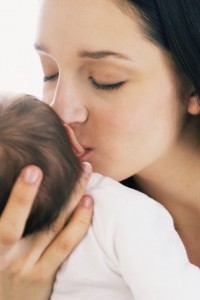 A recent study published in Environmental Science & Technology tied a group of chemicals called benzophenones to an increased risk of endometriosis. The study measured the amount of benzophenones in the urine of 600 women who were tested for endometriosis. One particular benzophenone, benzophenone-1, showed a significant association with the condition. Compared to women with low levels, women who had the highest concentration of this chemical in their urine showed a 65% greater chance of having the condition. In a separate study, the CDC found benzophenones in the urine of 97% of people tested. With one in ten women having endometriosis, benzophenone-1 may be the cause.
A recent study published in Environmental Science & Technology tied a group of chemicals called benzophenones to an increased risk of endometriosis. The study measured the amount of benzophenones in the urine of 600 women who were tested for endometriosis. One particular benzophenone, benzophenone-1, showed a significant association with the condition. Compared to women with low levels, women who had the highest concentration of this chemical in their urine showed a 65% greater chance of having the condition. In a separate study, the CDC found benzophenones in the urine of 97% of people tested. With one in ten women having endometriosis, benzophenone-1 may be the cause.
Benzophenones protect against UV light. In small quantities, like nail polish, it stabilizes compounds that are stored in clear containers. When used in a higher concentration, such as on the skin, it becomes a good sunscreen. Benzophenone-1 in particular can be produced from oxybenzone (or benzophenone-3), a chemical penetration enhancer found in sunscreen, when the body breaks it down.
Interestingly, the CDC also linked benzophenone-3 to many other health issues such as allergies, hormone disruption, cell damage and low birth weight in female babies. Among sunscreen, the chemical can also be found in facial cleansers/treatments, lip balm, lipstick, anti-aging creams, conditioners and perfume.
Endometriosis, a gynecological condition, occurs when tissue from the uterus grows outside of the uterus instead of inside it. The tissue can start to grow in other places such as into the abdomen, outside the ovaries and around the fallopian tubes. It thickens and sheds simultaneously with the tissue inside of the uterus during the menstrual cycle. The condition causes pain, irregular bleeding, scarring and can cause infertility.
The group of chemicals mimics estrogen, and while researchers cannot definitively pinpoint the cause of the condition, they do know that estrogen enhances the condition. Treatment usually involves medications to lower the amount of estrogen in the body.
The Personal Care Products Council, which represents cosmetics manufacturers, said that the study was weak and unconvincing and should not be a deterrent from sunscreen or safe-sun practices. The group says the study did not ask participants if (or how much) sunscreen they wore, therefore they couldn’t attribute the results directly to sunscreen.
Conversely, women in California had higher concentrations of the chemical when tested during the summer, suggesting that sunscreen is the culprit, according to Sonya Lunder, MPH of the Environmental Working Group. The CDC found similar results in light-skinned women who were tested, further confirming Lunder’s theory.
Many of the findings seem conflicting. The best advice may be to find a sunscreen without the chemical, such as one that is mineral-based, containing zinc oxide or titanium dioxide. These varieties block the sun naturally, so you can protect yourself against both the condition and the harmful UV rays.
Sunscreens without Oxybenzone:
Natural Sun SPF 30 Sunscreen for Active Lifestyles
Oat Protein Sunscreen SPF 30 by Kiss My Face
Read more about the topic here or here.

